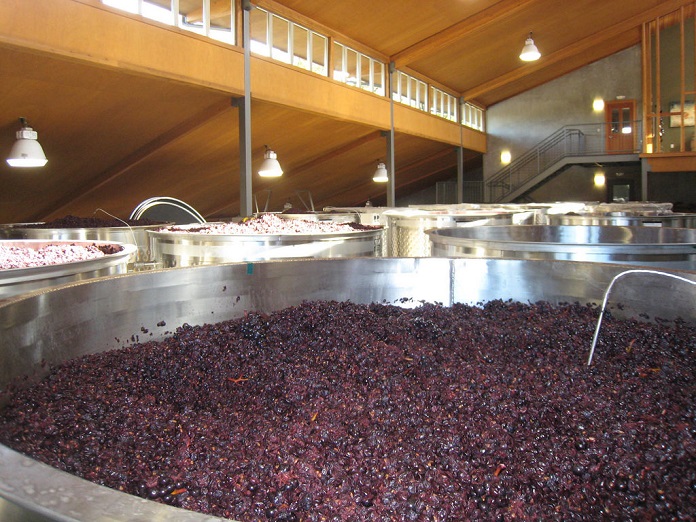
Yesterday afternoon, I chanced upon a website called “What your choice in wine reveals about you” or something along those lines. It claimed for example, that red wine drinkers are more serious, while white wine drinkers are more carefree; red wine drinkers have traditional tastes while white wine drinkers prefer modern things; red wine drinkers prefer Broadway plays while white wine drinkers prefer concerts. The article also claimed that red wine drinkers prefer candle-lit dinners while white wine drinkers prefer to eat outside. Of course this is all complete nonsense – yet another example of fatuous psycho-babble that unfortunately some people will believe.
The pointless exercise seemed to be founded on the flawed notion that “red wine drinkers” and “white wine drinkers” are two distinct species. It simply isn’t true. Anyone who enjoys wine with their evening meal knows perfectly well that the food influences the choice of wine. Most wine drinkers would switch from red to white regularly to complement what they’re eating. I must admit that I know of only one person who drinks reds to the exclusion of anything else but I feel pretty sure that he is an exception. Most people pick and mix, though hopefully not in the same glass. Sometimes you might feel like a light and spritzy dry white, yet on another occasion you might prefer a comforting and relaxing velvety Merlot.
The main difference between red and white wine is the way they’re made. It might come as a surprise that both red and white grapes produce clear, colourless juice when pressed. That’s why you can make white wine from red grapes. The colour comes almost entirely from the grape skins. White wine is usually made with minimal skin contact, whereas red wine gets its colour after a long soak with the grape skins and seeds. Pink rosé wine is a special case. It’s usually made by leaving the skins to soak for a limited time – sometimes as little as six hours. And of course, rosé is rarely a simple pink. The colour can range from the pale salmon the Provencal rosés to the deep seductive pink of those from Tavel. Sometimes, it can be a delicate orange or have the colour of pale onion skin.
The expression “white wine” is used all over the world in countless languages even though “white wine” does not exist. If it did, it would look like milk. White wine is transparent, but with a wide range of different hues. Italian whites such as Frascati and young Soave sometimes have the same transparency as water, though fortunately not the same taste. Most white wines have hues that lie in the yellow-to-gold range. Some wines from Eastern Europe, such as some examples from Slovenia and Georgia have a distinctive orange colour. Wine made from the Viognier grape or warm-climate Chardonnays matured in oak are often a rich gold. If you enjoy sherry, which though fortified is classed as a white wine, you’ll know that it can range from the pale yellow of a light dry Fino to a distinctive rich, dark brown.
Then there’s the famous Portuguese vinho verde (literally “green wine”) though the word “green” here is used in the meaning of being young and immature rather than describing its colour. Nonetheless, there’s often a greenish hint on these lovely light refreshing wines. You can also see greenish tints in the local Austrian wine Grüner Veltliner, which Mozart must have enjoyed from time to time, for he was fond of a glass or three.
There’s a similar range of hues in red wine too, though the spectrum is somewhat narrower. Unlike whites, which can assume many tints, reds are definitely red but they range from delicate shades to rich, intense purple such as the heavy-bodied wines made from Syrah, Malbec or the South African Pinotage grape.
“But what about blue wines?” I hear you ask. Well, you might be surprised to know that they really do exist. The American winery Premium Vintage Cellars produces a sparkler called Blanc de Bleu Cuvee Mousseux made from Chardonnay, to which a dash of blueberry extract has been added.
If your taste runs to zesty, sweetish blue wine, look to Spain. After several years of research with professional support, in 2015 a group of students from the University of the Basque Country launched their company Gik Live. It makes a range of innovative products including a striking bright blue wine which sold 30,000 bottles in its first year and close to 500,000 in 2017. Described by the makers as “slightly acidic, with a sudden cheerful sweet burst,” this blue wine gaily casts aside all traditional concepts. It’s made from red and white grapes and the blue colour comes from the organic compound indigotin as well as a natural pigment found in grape skins with the unappetizing name of anthocyanin. Strangely enough, this Spanish wine is becoming enormously popular in France. In a delicious twist of irony, it cannot be sold as wine in the European Union because it’s blue.
 |
 |
 |





